Some days, you just don’t feel like running.
That’s when it helps to hear a little motivation.
Of course, there are also those times when you probably shouldn’t go for a run. It’s okay to take a day off and let yourself recharge.
But it’s a different story when you’ve already begun running. Unless you’re facing an injury, you’ll usually regret it if you give in and stop.
So, the bad news is that you feel like quitting.
The good news is that I have 12 tips that will help you overcome that temptation and keep running.
How to Keep Running: 12 Tips When the Going Gets ToughTo be clear, I’m not advocating that you try to run through an injury, much less begin a run if you’re already hurt.
“But I can still jog, right?” – Typical Runner
What I am saying is that we all hit those walls every now and then.
When you first start running, you’ll probably hit them all the time.
But even those of us who have been running for years and years sometimes hear the siren call to slow down, stop, and call it a day.
Whether it happens during your next jog or in the middle of a marathon, here's how to keep running even when you really don’t want to.
1. Resist the Temptation to WalkBefore you get the inescapable urge to completely give up, you usually face the temptation to “just walk for a little while.” That voice in your head tells you it’s only a temporary measure. You’ll walk for a bit, maybe get your breath back or wait for the pain to subside, and then you’ll definitely start running again.
Unfortunately, this isn’t what usually happens.
The first reason is that switching to walking can be demoralizing. Even if you are able to start running again, you might still look back on your run as a failure. You didn’t run the entire thing. It didn’t count. Whether or not that’s fair, that feeling can lead to quitting. Why keep going after you’ve given up? Just accept the L and prepare for a W another day.
Why keep going after you’ve given up? Just accept the L and prepare for a W another day.
The second reason is that running gives your body a nice dose of all-natural painkillers:
“When you exercise, your body releases chemicals called endorphins. These endorphins interact with the receptors in your brain that reduce your perception of pain.
Endorphins also trigger a positive feeling in the body, similar to that of morphine.”
Walkers don’t get those.
So, when you decelerate from running to walking, don’t be surprised if those feelings of pain accelerate now that there are fewer endorphins to contend with.
Therefore, the worst thing you can do when you’re tempted to quit running is to actually give in and walk. In fact, I recommend that you make it a habit to regularly ignore that initial impulse. The first time it shows up, dismiss it outright, and keep running.
If you’ve strategically planned walking breaks into your run, that’s completely different, but you still need to fight any temptation to start them early. I’ll talk about this kind of interval training later on.
I’ll talk about this kind of interval training later on.
Once you give in and start walking, it’s going to be difficult to pick up the pace again. Keep running and utilize these other strategies if the temptation returns.
2. Start with Good Form and PostureBefore you even so much as slow down, I want you to check yourself to make sure you’re practicing good running posture.
I’m serious.
While many people love to run because it’s such a natural exercise, the best runners know that the best times belong to those who have the best form. As Meb Keflezighi once said about his winning performance in the Boston Marathon:
“If it wasn’t for form, I don’t think I would have won. I think about my feet, where they’re going to land. My hips, knees, legs, arms, neck. Where my head should be positioned. Where my chin should be going uphill, downhill.”
Even if you don’t have ambitions to someday win a major marathon, form is still important for making the best use of your energy and fighting off pain.
The next time you feel the temptation to quit running, run through this checklist first to make sure your posture is correct:
 Instead, keep your hands down by your waist and bend your arms at 90-degree angles. This posture may look casual, but it will actually support much longer runs.
Instead, keep your hands down by your waist and bend your arms at 90-degree angles. This posture may look casual, but it will actually support much longer runs.  So, keeping them relaxed during your run is a good way to keep that tension from building up in the first place. This will also make it easier to take nice, deep breaths as you run. If you can’t breathe easily, it’s going to be difficult to keep running. Periodically, check your shoulders. Are they up near your ears? If so, force them down and back by squeezing your shoulder blades together. This will open them up and help them to relax.
So, keeping them relaxed during your run is a good way to keep that tension from building up in the first place. This will also make it easier to take nice, deep breaths as you run. If you can’t breathe easily, it’s going to be difficult to keep running. Periodically, check your shoulders. Are they up near your ears? If so, force them down and back by squeezing your shoulder blades together. This will open them up and help them to relax. 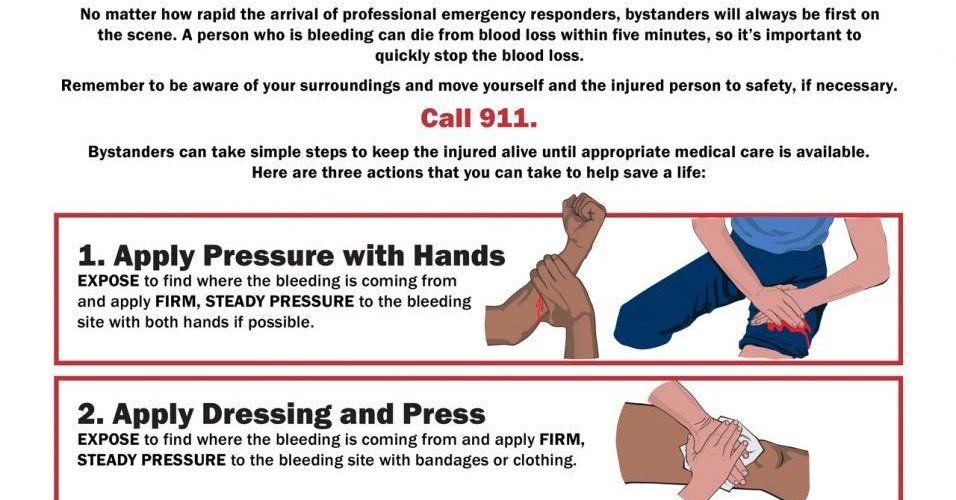 As a result, it quickly starts to feel like they’re doing bicep curls. Their arms ache, but they still try to maintain this “form”, which only makes matters worse. Tension spreads up their shoulders, to their neck, and, well, you know the drill. When you run, move your arms at your shoulders and drive your elbows back before letting them naturally swing forward.
As a result, it quickly starts to feel like they’re doing bicep curls. Their arms ache, but they still try to maintain this “form”, which only makes matters worse. Tension spreads up their shoulders, to their neck, and, well, you know the drill. When you run, move your arms at your shoulders and drive your elbows back before letting them naturally swing forward. Half the battle for runners is to keep your breath in check, so you don’t tire out or cause yourself the infamous side stitch. While picking the right cadence is important – more on that in a moment – the best you can do to keep your body relaxed and breathing easily is to maintain good posture. It will be much easier to keep running if you do.
You may have noticed that I mentioned breathing six times in that last section, even though it was about form.
That’s because the better you’re able to manage your breath, the better able you’ll be to manage pain when you’re running.
And while good posture will definitely help with your breathing, you can do even more to ensure your body is getting plenty of oxygen while you run.
Simply put, always breathe through your nose and out your mouth.
I know it’s easy to rely solely on breathing through your mouth, especially as you begin to tire, but it will actually do more harm than good and virtually guarantees you’ll struggle:
“Hyperventilation through the mouth, i.e. the quick and hard breaths through the mouth that so many of us take when exercising at high intensity or feeling stressed, causes the body to offload more CO2, making it harder to oxygenate our cells.”
At first, it can be difficult to never breathe in through your mouth when you run, but it’s worth practicing.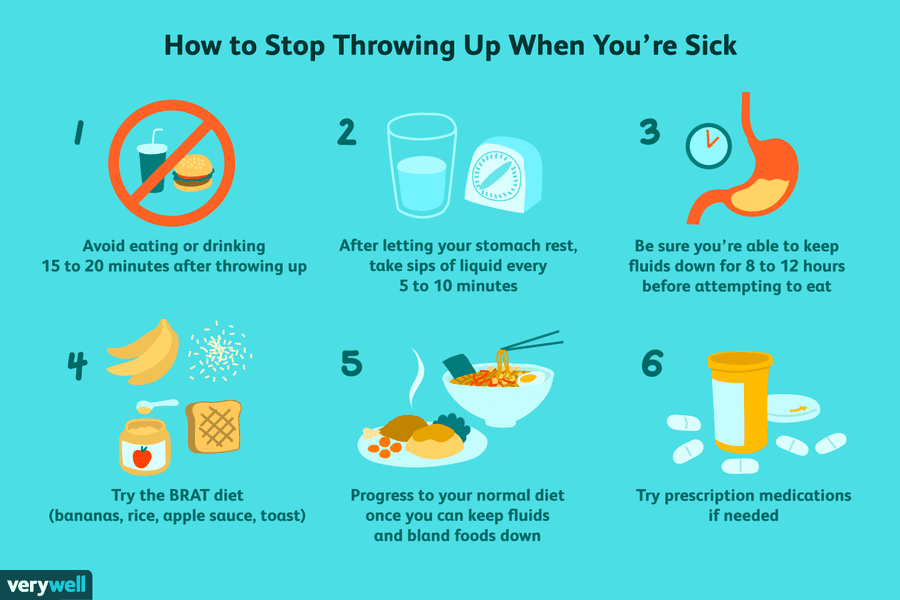 If you have to slow down your pace to do so, it’s worth it. You can work your way back to your normal cadence (the Run/Walk Method in section 9 will also help with this).
If you have to slow down your pace to do so, it’s worth it. You can work your way back to your normal cadence (the Run/Walk Method in section 9 will also help with this).
Within just a few weeks of consistently practicing like this, your lungs will actually expand your blood vessels, which increase your ventilatory threshold.
Ideally, you want to work up to the point that you can breathe in for two steps and then breathe out for two (the “2:2 pattern”). This will give your muscles plenty of oxygen and it’s an easy way to keep your breathing on pace.
Just like with form, if you find yourself aching while you run, check your breathing. Chances are you’re not practicing the 2:2 pattern. Slow down a bit, get your breath back on track, and then keep running.
4. Distract YourselfI think distractions get a bad name.
Sure, they’re not all great. I’ve definitely spent more time than I’d like to admit watching documentaries on Netflix (the titles of which I’ll never admit).
But distractions can be fantastic when you start rethinking whether or not you want to keep running.
That’s when it helps to focus on something other than that growing urge to call it quits.
For many people, the simplest way to do this is by drawing attention to the song playing through their earbuds. You might even mix it up with a new song you haven’t heard in a while, as that might have an easier time winning over your focus.
Audiobooks can be great for this, too. Unless you’re listening to the same one for the second time, you’re never quite sure what’s going to happen next. So, pick an interesting book and you’ll always have a distraction ready when the going gets tough. If you don’t already have an Audible account, I highly recommend it.
Podcasts are great for the same reason. Start an episode you haven’t heard before and direct your attention there.
Another simple distraction is using a metronome for your runs. Not only will it give you something to focus on, but it will put that focus on your actual steps. This will make it easier to maintain your running cadence, so you don’t just keep running, you keep running at your ideal pace.
This will make it easier to maintain your running cadence, so you don’t just keep running, you keep running at your ideal pace.
Before your next run, think of some distractions you can turn to if you think about ending things early. Whether it’s a different type of song, a book, a podcast, or just turning a metronome, have those distractions ready for when you need them.
5. Or Just Bribe YourselfI think bribes get a bad name, too.
Okay, no. Bribes are bad, but if there was one time when it was maybe okay to use a little bit of a bribe, I’d say it’s when that voice in your head tells it’s time to quit running early.
For example, I know some runners who will give themselves a cheat meal or allow themselves dessert if they push through the discomfort and keep on running. Maybe for you, it would be an extra episode of that show you like or sleeping in a bit the next morning. Maybe it would be a guiltless happy hour or brunch with friends.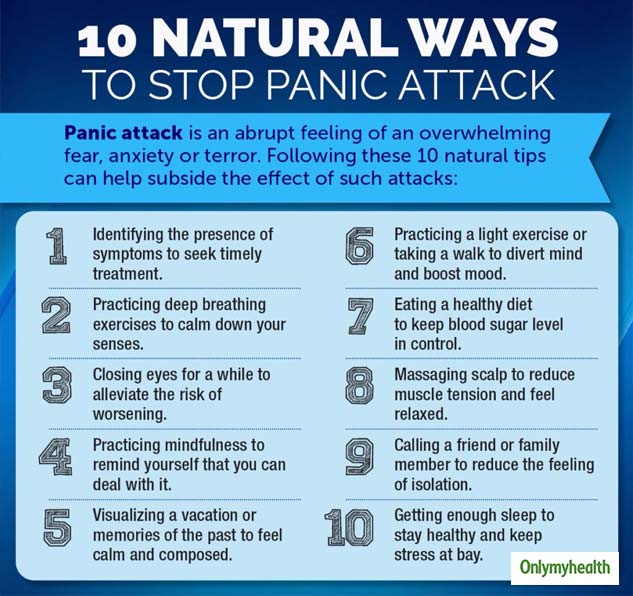
Some runners prefer to reward themselves but only after they’ve reached a certain milestone. Maybe it’s running a certain number of miles a day for five days. It could be running a total of 100 miles in a month without any walking.
Whatever the case, the outcome is the same. When the temptation to throw in the towel shows up, it helps to have another, bigger, better temptation to keep you running.
6. Focus on the Reason You're RunningHopefully, you’re not just running to make room for dessert or justify another glass of cabernet.
Don’t get me wrong.
Those things are great.
But is there a greater purpose that gets you to put your running shoes on?
Is there a goal you’re chasing whenever you run?
I know many of you are running to train for a 5k, half-marathon, marathon, or some other event. Even if it’s not your first, those are still impressive goals. Think about how important it is to keep running so you show up ready on race day capable of recording your best time.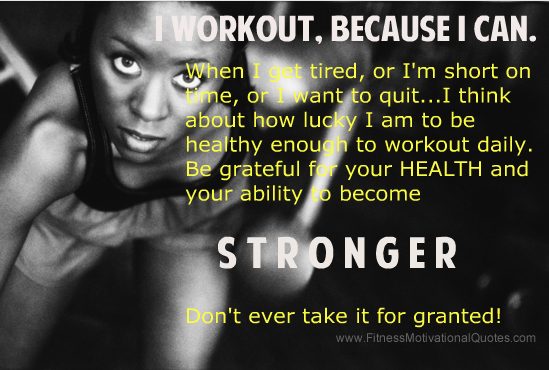
Many people take up running for health reasons. Maybe you’re trying to lose weight or want to improve your cardio so you can take on other activities.
If you’re a parent, a big part of running might be setting a good example for your kids. It could just be so you’re able to keep up with them.
Of course, there’s nothing wrong with running simply because you like it. If it makes you happy, that’s reason enough. But if you’re noticing that your fun is being cut short because you’re unable to push through discomfort, it will help if you can think of a bigger goal.
Is this the year you finally decide to sign up for a race?
Is there a number you’d love to see from your scale?
Brainstorm some ideas and come up with a goal that can pull you away from the temptation to quit running.
7. Give Yourself a Target DestinationIt turns out that there’s a really simple trick you can play on your mind that will help you keep running even if you feel like you’re about to give up.
This cool trick is known as “attention narrowing” and is extremely helpful for runners, as The Atlantic pointed out in an article titled, Running Faster by Focusing on the Finish Line:
“But new research suggests that taking the "eyes on the prize" mantra literally can help with performance. A study published in the journal Motivation and Emotion found that focusing on a stopping point in the distance, like a building or tree, can cause distances to appear shorter. This, in turn, encourages exercisers to move more quickly and reduces the feeling of exertion.”
This is pretty amazing when you think about it.
Attention narrowing won’t just help you get through a rough spot by making it feel like time is passing faster. It will actually help you run faster, too.
The next time you feel like stopping, keep calm. Find an object out ahead of you and focus on trying to get there. By using an actual destination as your distraction, you’ll realize two benefits and avoid the ultimate negative: giving up.
Obviously, this works best when you’re running in an actual race. While I suppose you could do it on your local running trail, trying to race unsuspecting runners will probably earn you a bad reputation.
If you’ve ever run a race before, you know that one of the most important steps – at least, figuratively – is maintaining your cadence. It’s easy to get excited and let your adrenaline take over. Unfortunately, that’s how you end up gassing out before you’re even halfway done.
As we just learned, focus can also be a powerful weapon against fatigue. You can use it to distract yourself or to pick physical landmarks to focus your mind on while your body keeps pushing forward.
Another option that’s a bit more exciting is to find a fellow runner to compete against.
While most marathon runners compete against their own best times, it can help to find a runner up ahead whom you can catch up to and overtake.
Now, you have to be careful with this strategy.
It’s only supposed to be a temporary solution for overcoming aches, pains, and exhaustion. If you just keep trying to race people for an entire marathon, you’re either going to win (great!) or struggle to finish (not great).
Wait until you need some extra motivation and you have a better idea of the field of runners around you. Focus on one who’s been keeping about the same pace and then take your attention off discomfort and put it on overtaking them.
Once you do, slow back down to your normal cadence and collect yourself. Repeat as necessary.
9. Give Yourself a "Walking Budget"Look, we all have bad running days.
Whether you get a side stitch, pull a muscle, struggle with tension in your upper body, or are just running low on motivation, it’s okay to admit – every now and then – that you’re not going to finish your run without some walking.
In that case, one idea is to give yourself a “walking budget.”
As I mentioned earlier, once you quit running to start walking, it’s hard to reverse course. Your body will naturally prefer to stick with the more relaxed, less-demanding pace of walking.
Your body will naturally prefer to stick with the more relaxed, less-demanding pace of walking.
One way to get over this is to give yourself a “walking budget” of only a certain number of steps. It could be 50 or even 100.
The point is that you tell yourself, “Alright, I’m going to walk for 100 steps, but then I have to start running again.”
Keep in mind, you can take as long as you want to walk your allotment. You might decide to slow your cadence considerably to help catch your breath, get over your side stitch, etc..
That’s fine.
You just can’t go over budget.
Once you’re out of walking steps, it’s time to switch back to running steps.
A similar idea is to give yourself a timed break. You might tell yourself you’ll rest for a minute before running again.
I prefer the walking budget, though, as it keeps you moving. This makes it easier for your heart and lungs to ramp back up again, but it’s especially beneficial if your muscles are likely to cramp up once their demanding work is over.
Start with a walking budget of 100 steps the next time you feel like quitting and see if that quick break doesn’t help you get back to running.
10. Switch to Intervals of Running and WalkingIf you find yourself regularly depending on your walking budget to get through your runs, it might be that your endurance isn’t quite where it needs to be – yet – to tackle the kinds of mileage you want to cover.
There’s absolutely nothing wrong with that.
We have all been there.
Some of us, multiple times.
One easy way to address this challenge is through the Run/Walk Method. This is when you switch between intervals of walking and running at preplanned times in order to finish.
For example, you might run for five minutes and then walk for five minutes. If that becomes manageable for you, you could switch to running for five minutes and then walking for only four. In this way, you’ll build up your endurance without having to fight through the kinds of physical discomfort that would come from trying to run 100% of the time.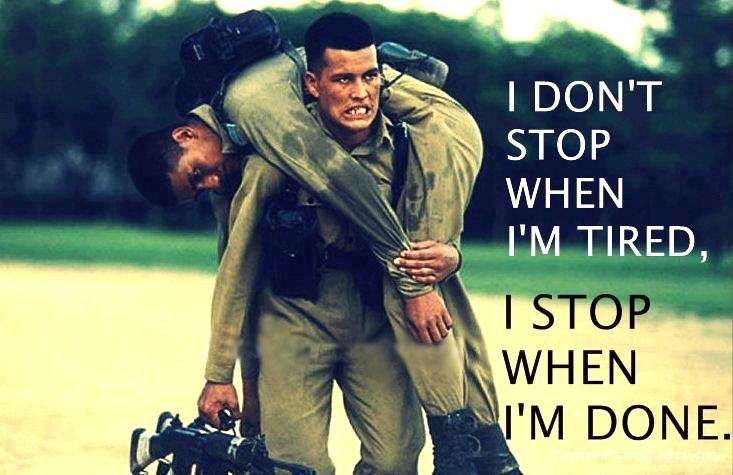
I like this approach because it gives you the rest you need to continue running, but it’s preplanned when you’ll downshift into walking. You’re not just doing it on a whim and building the bad habit of giving in when it gets tough.
Also, many experienced runners still occasionally use the Run/Walk Method to help boost their times. They’ll push themselves past their normal speed before switching to walking to rest a bit before doing it again.
So, how you keep running through the pain may eventually be how you beat times you never thought possible.
11. Come Up with an If/Then PlanOnce you’ve been running long enough, you start to get very familiar with the kinds of aches, pains, and even thoughts that can show up to slow you down.
Again, there are those absolutely awful side stitches.
You might have an old sports injury that nags you.
Most of us eventually have the thought, “I just can’t do this.”
Whatever your specific physical and mental obstacles may look like, I recommend that you write them down now or at least before your next run.
If you don’t already have one, I’d also recommend you try a runner’s journal for jotting down these kinds of important notes.
Write them down as an If-Then Plan before you go out on your next run. Put a plan together for how you’ll address each one if they happen.
For example, yours might look like this:
I think one of the biggest challenges for most runners when they start noticing those initial aches and pains is that they don’t have one of these plans in place. They know they don’t want to stop, but they have to consider their options while they’re still running and still feeling that pain.
Knowing you have a plan in place for your most common obstacles will give you peace-of-mind and make it much easier to adjust on the fly and salvage your run.
12. Change Your Plans (But Don’t Quit)Finally, it’s okay if you realize that your normal run was actually a bit ambitious.
It could just be temporary.
If you’re coming off an injury, haven’t run for a while, or aren’t getting enough rest, it might be a while until you’re able to run as long as you want without having to stop along the way.
While I know the other 11 strategies on this list will help you power through the pain and keep running when you think you want to stop, sometimes, the best thing you can do is step back and reconsider your normal runs.
Either reevaluate what kind of time you’re shooting for or cut back on the distance a bit. Get back to runs you can enjoy and build from there using the other strategies you’ve learned.
But don’t quit.
Never quit.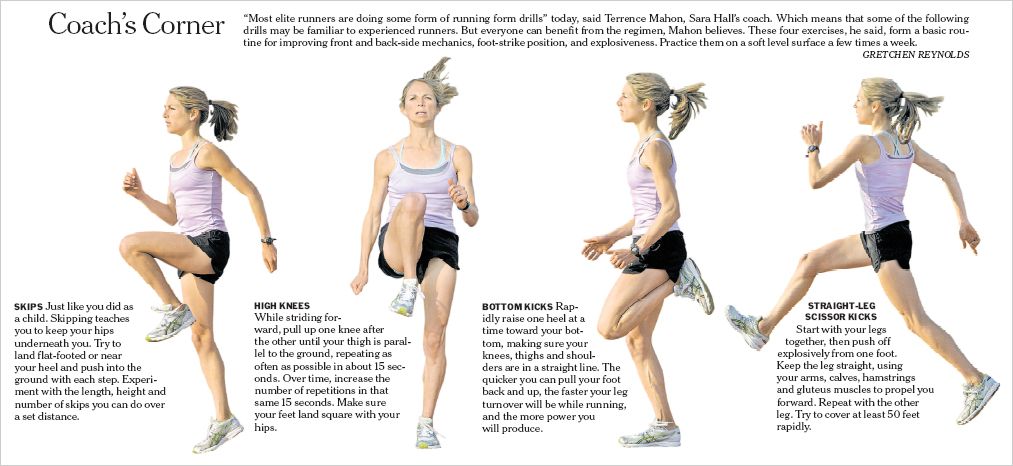
Marcus Aurelius said, “The impediment to action advances action. What stands in the way becomes the way.”
Now, I have no idea if Mr. Aurelius was a good runner or not.
But I think his advice certainly applies to anyone who needs help learning how to keep running when they regularly don't want to.
If it happens again and again, use it as an opportunity to become a stronger runner.
Fix your posture.
Learn to breathe better.
Find a destination to run toward.
Whatever you need to do, start planning to do it now. Put together your If-Then strategy, find your running shoes (or try barefoot running), and, most importantly, enjoy yourself.
Back to blogSoooo helpful!!! Thank you 🤍
GracenIt’s a great article and was of enormous help. I’m 66 and have a great natural VO2 Max and never had any difficulty in endurance running. As a younger I’ve ran a lot but at some stage I resorted to hiking and other sports. Now I’m running again since last 18 months and my effortless pace is 4:30 per kilometer for short runs and 5:15 per kilometer for long runs.
As a younger I’ve ran a lot but at some stage I resorted to hiking and other sports. Now I’m running again since last 18 months and my effortless pace is 4:30 per kilometer for short runs and 5:15 per kilometer for long runs.
Thanks for the tips
Its a mind game too
I am 67 been running yrs
But have to get it in my head that i can do it
Intervals do work
My last 1/2 was intervals, best time
Mary Jennings and her running buddies keeping each other motivated.
We all know what it is like to become overwhelmed by that anxious feeling on the run. We convince ourselves that we are not able for the distance and something inside us tells us to stop. The easiest thing to do in this situation is give in to the feeling. However, that only gets us as far as the next time these feelings arise and we have to stop again. Instead of fearing these moments and trying to avoid them, we could try to embrace them and accept them.
The easiest thing to do in this situation is give in to the feeling. However, that only gets us as far as the next time these feelings arise and we have to stop again. Instead of fearing these moments and trying to avoid them, we could try to embrace them and accept them.
Accept the inevitable.
How we manage these mid-run setbacks determines how the rest of our run will go. It also impacts our confidence the next time we put on our running shoes. There are ups and downs in running like everything else and the downs pass by reasonably quickly if we just accept their inevitability. Welcoming these mental stumbling blocks may not seem the most appealing thing to do, but if we have a plan in place for how to deal with their arrival, we don’t waste our running energy worrying about the next one, we just get on with the run and handle the blip.
Welcome the feeling.
READ MORE
The first step is to notice the arrival of the feeling of fatigue or negativity.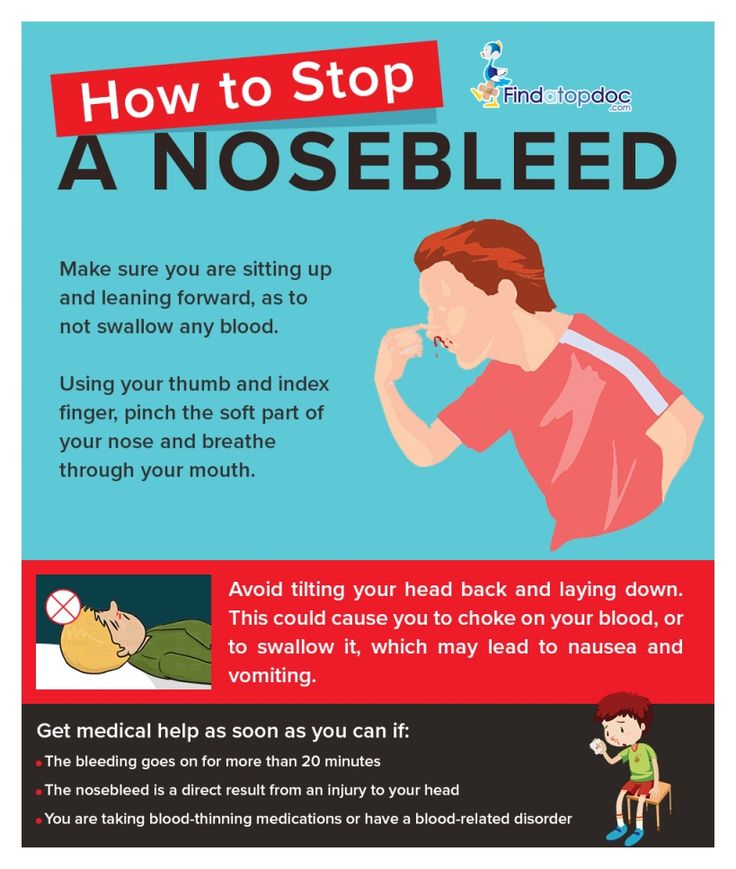 We all experience it differently but the impact is the same. We doubt our ability and are tempted to quit. Decide in advance what you going to do when you next feel this.
We all experience it differently but the impact is the same. We doubt our ability and are tempted to quit. Decide in advance what you going to do when you next feel this.
Here are the steps I aim to follow when I get the urge to stop:
1. Don’t walk just yet
For a runner who has a goal of “running all the way” stopping to walk is demoralising. There are no rules against walking in a run, but I find that once I stop to walk once I will walk 20 times in a run. I suggest you keep running but slow right down. Shake out the tension from your arms and legs, and imagine yourself running on the spot or indeed on a treadmill. This will calm your breathing and allow you to think more clearly. More often than not the temptation to stop will pass and you will return to your running comfort zone gradually. This slow jog offers us a moment to decide if now is the time to walk, or if indeed we just need a moment of less-intense running to catch our breath.
2. Check in on your posture
Check in on your posture
When we are feeling down on our run, it shows in our body. From the sidelines we all can recognise a runner who is going through a bad patch. They look deflated. Treat this negative feeling on your run as a message from your body to remind you that you could be making running easier for yourself. Check in with your running posture, notice if your gaze has dropped to the ground, pop on your fake smile and imagine the person in front of you is pulling you along by a string. Being pulled along rather than having to push ourselves along is surely an easier way to travel. After a few moments of imagining a more comfortable run, you will feel lighter, relaxed and positive.
While, in theory, we all should be focused on our running form throughout, there can come a point where distracting ourselves from the run is just what we need to get over the hurdle. For some runners this can mean turning on their favourite song or indeed signing themselves. I’m a big fan of the running metronome to keep my feet ticking over quickly. For others simply playing counting games or trying to remember a famous person’s name who starts with every letter of the alphabet can do the trick. Find your game of choice and start playing it when you feel like you need to stop thinking about running.
I’m a big fan of the running metronome to keep my feet ticking over quickly. For others simply playing counting games or trying to remember a famous person’s name who starts with every letter of the alphabet can do the trick. Find your game of choice and start playing it when you feel like you need to stop thinking about running.
How we manage mid-run setbacks determines how the rest of our run will go.
Carry a stash of emergency goodies that you can refuel with when you hit these slumps. A little bag of sweets can mentally and physically give you a little lift and set you back on the right path. Accept it will take a little time for the sugar rush to kick in, but knowing that is an energy lift coming is enough for many of us to keep on going. A little bribery can go a long way for a mentally tired runner. Allow yourself another treat when you get to the next mile marker and don’t look beyond that next milestone. Keep your head in the mile you are in.
For a runner who has a goal of “running all the way” stopping to walk is demoralising.
5. Remember why
Having a little reminder of why running is important to us is valuable when negative thoughts abound. You might have a running mantra you can repeat to shift your mindset to a more positive place. If that doesn’t work for you, many runners gain more from visual motivation. They draw little doodles or motivational quotes on their hands which remind them of the people who are counting on them or those who have helped them get this far. If you can’t have a supporter on the sidelines, this is the next best thing to having real-life cheerleaders.
If you still feel like stopping after all of the above and decide that walking is what you need, then go for it. There is absolutely no shame in walking, but you do need to set a few rules. The longer you walk, the harder it is to get back running. Setting a limit to the distance you can walk is a great way of giving yourself a controlled break. In long distance runs, I allow myself 100 steps and then get myself back running again very slowly. I may have multiple mini walks like this as I know if I walk longer than a minute or so I’ll convince myself to stay walking for much longer.
In long distance runs, I allow myself 100 steps and then get myself back running again very slowly. I may have multiple mini walks like this as I know if I walk longer than a minute or so I’ll convince myself to stay walking for much longer.
You are not alone.
We can get so caught up in our own run that it’s very easy to forget that everyone else on the road also experiences these mid-run setbacks. We all have to manage these running demons and they catch us all when we might be least expecting them. The best runners just know how to recognise these moments arriving and have plans in place to help accept these as part of the running journey.
Mary Jennings is founder and running coach with ForgetTheGym.ie. Mary's new book is Get Running, published by Gill Books
Sign up for one of The Irish Times' Get Running programmes (it is free!).
First, pick the eight-week programme that suits you.
- Beginner Course: A course to take you from inactivity to running for 30 minutes.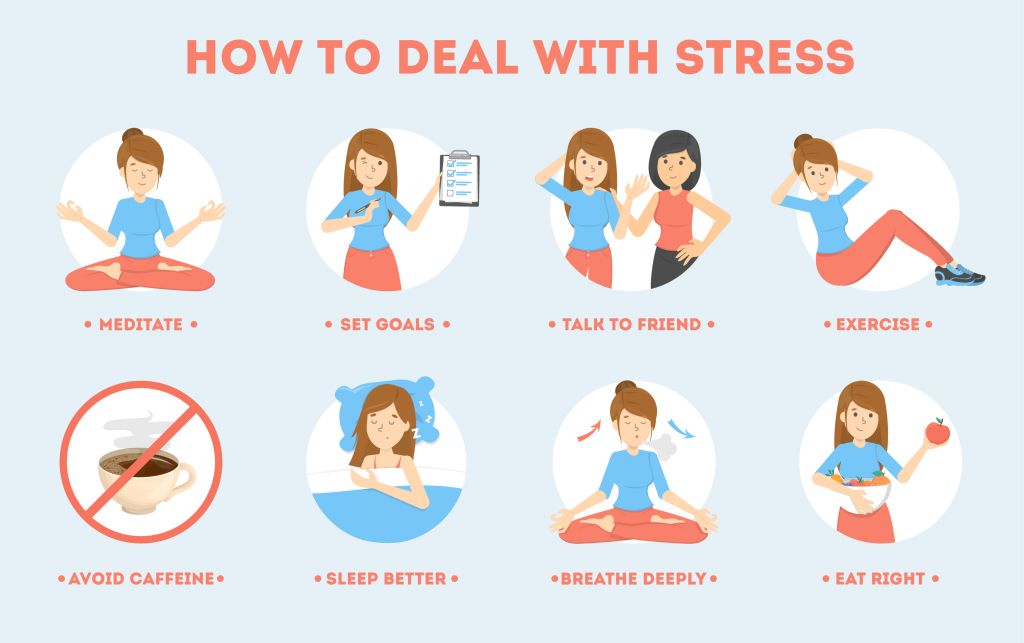
- Stay On Track: For those who can squeeze in a run a few times a week.
- 10km Course: Designed for those who want to move up to the 10km mark.
Best of luck!
Many are familiar with the situation when you need to do a workout - but there is no strength for it. After a tiring day at work or at the end of a training week, when fatigue has already accumulated. How much it is necessary in this case to overdo yourself and go for a run, said the head coach of the Marathonica running school Ekaterina Preobrazhenskaya.
When it comes to training when tired, it is important to understand the cause of this feeling. There can be several of them, both true and false. First of all, you need to decide whether it is really fatigue or lack of motivation.
Let's figure out what fatigue can be.
If it is obvious that we are dealing with a lack of energy, then the next step is to find out the causes of this condition. There can also be several scenarios here - it is useful to understand each of them in order to make the right decision in the end.
There can also be several scenarios here - it is useful to understand each of them in order to make the right decision in the end.
Perhaps the most common "state" of modern man. I want to do a lot of different things, and there are only 24 hours in a day, and as a result, we sacrifice sleep for the sake of more interesting activities.
However, lack of sleep reduces athletic performance, especially when it comes to strength sports. For example, professional athletes competing against the backdrop of jet lag (jet lag) usually show lower results. Lack of sleep may not affect endurance as such, but the morale on a run against its background will not be the best.
Good sleep, as a rule, plays a key role not on the eve of a performance, but the night before. The fact is that during sleep many vital processes take place that affect the recovery of the body and nervous system, a kind of reboot of the system occurs. If you methodically cut the time allotted for these processes, the body will simply cease to fully recover.
Read on: Why do you feel sleepy after a run?
Marathon runners need more sleep during training, precisely because of the need to recover from heavy loads. It is believed that on average you need to sleep about 8 hours, although this figure is individual.
To know that you are getting enough sleep, try to go to bed at the same time every day and get up without an alarm clock - this way, in a few days you will be able to compensate for lack of sleep, and then understand how many hours you need to sleep well.
Should I train or not because of lack of sleep? If you slept less than your norm, then evaluate whether there is enough time to sleep in the upcoming night. If there is a reserve, then you can go to training, reducing its intensity. But if the workout takes time away from sleep, then it's better to skip it and rest.
If the day was very active, but the type of activity did not match what was planned in the training, you can safely run.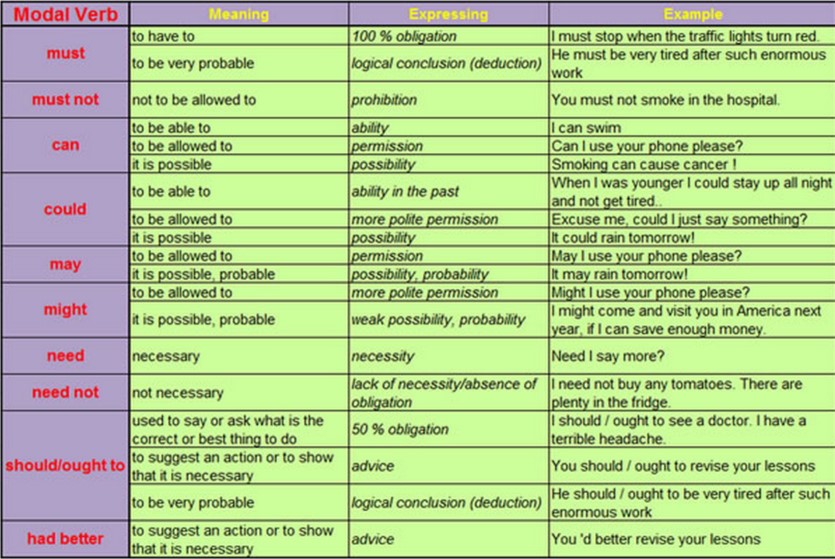 We experience a feeling of fatigue not only because of the physical severity of classes, but also because of the psycho-emotional state. A lot of impressions and an unusual load of usually few muscles involved can lead to a feeling of fatigue.
We experience a feeling of fatigue not only because of the physical severity of classes, but also because of the psycho-emotional state. A lot of impressions and an unusual load of usually few muscles involved can lead to a feeling of fatigue.
If at the same time you did not put much pressure on your legs, then a run will not hurt. Most likely, after it you will feel much more cheerful. Just remember to get enough sleep and eat right afterward to recover for the next day.
In the case when the load falls on the legs, for example, skiing, long walking or cycling, it is better to postpone the run unless absolutely necessary.
If you understand that the day was not very active and you had time to sleep, but you still do not want to train, it is probably a matter of loss of motivation. It can be related to bad weather, boredom, or a sense of aimlessness in training. In this case, it is better to somehow pull yourself out for a run.
This may require some tricks. For example, persuade yourself to run just one kilometer, and then return home. There is a high probability that the appetite will come while eating, and instead of one kilometer you will do a full workout.
It is worth remembering that the results appear only with a systematic and regular practice, so the feeling that nothing will happen from missing one workout is false. As a rule, after accepting such an excuse, omissions occur more and more often, and the system collapses.
This is no longer just temporary fatigue, but a certain state of the body that occurs as a result of regular hard training without proper recovery.
"Overtraining" is caused by all the above symptoms: lack of motivation and emotional return from training, a permanent state of fatigue, lack of form growth, overestimated or underestimated resting pulse. But in this case, the symptoms are not one-time, it becomes a permanent background.
In addition, the degree of fatigue is really high, this is the case when the expression "as if driven by a skating rink" is applicable.
Overtraining is terrible because it can take several months to get out of it, including a complete rejection of training. Of course, it depends on the degree of neglect of the situation. If you track it at the very beginning, skipping one or two workouts can prevent an unpleasant condition and future injuries.
Of course, in this case, running against the background of fatigue is out of the question. However, the problem is that it is difficult for an inexperienced athlete to distinguish a banal loss of motivation or slight fatigue from the first symptoms of overtraining. The best way to figure out what's going on is to review your training over the past week or two and see if you're overdoing it.
But when assessing, it is important to be objective - not to feel sorry for yourself, but also not to overestimate your capabilities. The best way to avoid overtraining is to work with a professional trainer who will build the process according to your fitness level and make sure that the increase in load is smooth.
The best way to avoid overtraining is to work with a professional trainer who will build the process according to your fitness level and make sure that the increase in load is smooth.
Thus, it turns out that it is possible to train against the background of fatigue, but you always need to analyze its causes and evaluate the possibilities for a good rest after training. Otherwise, a “snowball” situation will arise, when, due to under-recovery, fatigue will increase and increase, which will eventually lead to very unpleasant consequences.
Keep a balance, do not skip workouts if you are too lazy to go for a run, but do not overload yourself with physical activity, rest is also very important. In extreme cases, you can reduce the number or intensity of training.
Read on: How sleep affects running results
Share with friends:
This article is for those who not so long ago went out with enthusiasm for the first run, and then for the second and third .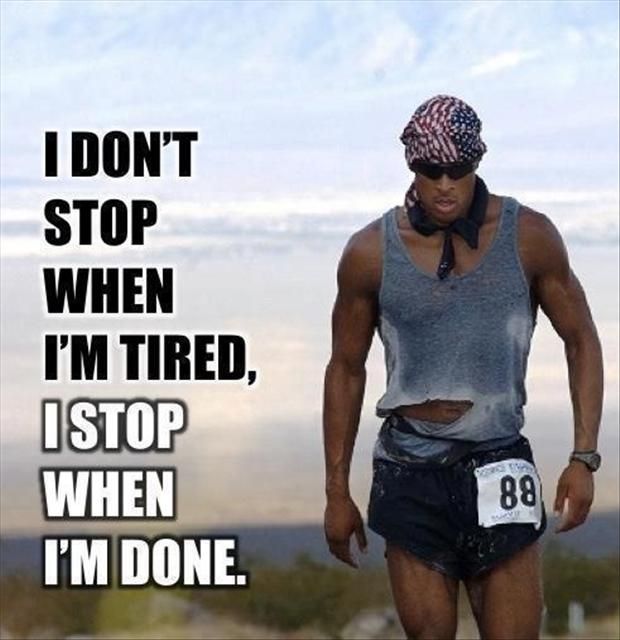 .. But a couple of weeks have passed, and the initial fuse begins to fade. How not to quit running after a successful start and make training more comfortable? These tips will help you (again) fall in love with running seriously and for a long time.
.. But a couple of weeks have passed, and the initial fuse begins to fade. How not to quit running after a successful start and make training more comfortable? These tips will help you (again) fall in love with running seriously and for a long time.
Running is an adventure where you can never predict where it will take you. Surely, you have heard the stories of runners about how great they feel with every kilometer they cover and are in harmony with the world around them. And yours could be quite the opposite. It is hard to breathe, the blood pulsates in the temples, the legs are heavy and cottony. And no promised euphoria. Unfortunately, this happens if before the first workout you only watched sports on TV, spent 8-10 hours daily at the computer, and the only physical activity was a walk to the car.
If you have little experience of jogging, but you still do not feel much pleasure from the process, just try to hold out a little more.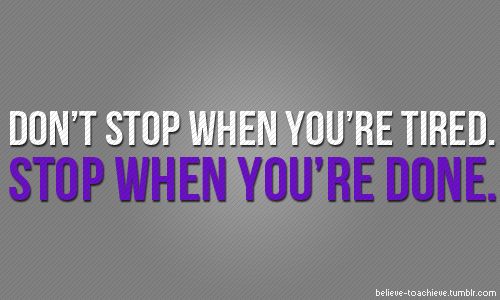 Be patient. Continue. And wait until your body starts to get in shape and adapt to the loads. That's when the rush of endorphins is coming, the physically tangible happiness from a perfect run and the desire to continue these runs. Running really brings a special high, but it can be earned with regular training and perseverance.
Be patient. Continue. And wait until your body starts to get in shape and adapt to the loads. That's when the rush of endorphins is coming, the physically tangible happiness from a perfect run and the desire to continue these runs. Running really brings a special high, but it can be earned with regular training and perseverance.
Those who started running in order to lose weight often give up this activity, because. expect fast results. But for weight loss, one run is not enough, an integrated approach is needed here. Only in combination with a rational balanced diet, training will give the desired result, which will last for a long time.
For beginners, running in casual clothes like a cotton T-shirt and home trainers is enough. However, special running clothes, even inexpensive ones, will give the body a lot more comfort. During the run, you will feel incomparably more comfortable, which means that you will be more willing to go to training next time. And yes, nothing motivates you to go for a run like the desire to put on a stylish, comfortable, technological uniform.
You don't need to spend crazy money on equipment. The minimum set is a running T-shirt and shorts, in winter - a windbreaker, long-sleeved thermal underwear, warm leggings, and most importantly - running shoes. Again, the most fancy are optional. The main selection criterion is convenience.
Girls with large busts are advised to wear a good sports bra, and the problem of straps falling off the shoulders and breasts jumping in all directions will be solved.
Or maybe you have caught the courage, want to run every day, and now you can't be stopped? Calm, just calm. High mileage and high pace is a direct road to overtraining and injury. For beginners/adults, it is best to practice 3-4 times a week. If your fitness level is low or you can't run for 30 minutes non-stop, focus on general fitness. Jog as lightly as possible or even walk at a brisk pace until you adapt. The principle is this: better slower, but longer.
And when you are able to run for 30-60 minutes, try interval running, uphill acceleration, etc. And diversify your training menu, and learn to run more efficiently.
Those who want to start/continue running often do it chaotically and irregularly. And when they don't see results, they get frustrated and quit. Therefore, a training plan is an ideal help. It organizes your runs, allows you to gradually progress and gives you a long-term vision.
Find a training plan here.
If you want to run long, hard and without injury, be sure to include weight training in your weekly plan. They will make you stronger, which means they will allow you to run faster and more economically. Exercises should be aimed at developing the muscles of the whole body, and not just the legs, because when running, the body, shoulders, and buttocks are also involved. A strong muscle corset maintains the correct body position during long runs, and this significantly reduces the risk of injury. Do PPP at least twice a week.
Don't have a competitive streak? It doesn't matter. The important thing is that the upcoming start will set you a clear goal for training. Knowing you have a 10k run in a month makes you less likely to miss another run.
And don't be afraid that you'll have to be the last to go alone. Firstly, you will obviously not be alone: not only advanced runners, but also beginner runners take part in the races. Secondly, choose a distance according to your strength. Thirdly, all fears will disappear when you feel that you belong to a huge running community, plunge into the unifying atmosphere of a sports festival and make new acquaintances.
You can go out for training alone, or you can be lazy. But if you and someone agreed on a joint run, this obliges.